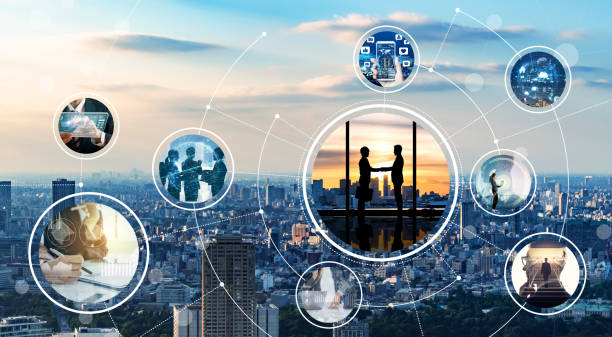Technology has changed how businesses operate by making them more visible, more approachable, and by assisting them in enhancing both their internal operations and the services they offer.
The benefits that organizations have been reaping as a consequence of using digital technology have led to a huge increase in the popularity of implementation strategies over the past few years.
However, one may start by looking around and observing how significantly businesses have altered their operations to begin to comprehend just how major the impact of technology is on business.

Businesses have seen enormous changes on all levels, and it’s all because to technology, from the approach they take to the administration of their internal teams to the way they manufacture and sell their goods and services. Regardless of the sector in which companies operate, technologies like artificial intelligence, machine learning, and the internet of things have been transforming how businesses are conducted, and changes are still occurring today.
So, let’s investigate some of these significant changes that businesses have been going through as we set out on a quest to learn more about how technology affects business.
Since team management has already been brought up, let’s begin our investigation by talking about it. This topic has profited immensely from the integration of numerous technologies.

Businesses have experienced an improvement in employee happiness, which translates into a better relationship with their staff, by utilizing cutting edge technologies and solutions.
But how specifically can the adoption of various technologies assist businesses in achieving this improved employee engagement? Businesses have, however, included cutting-edge digital platforms to help them improve communication with both internal and external teams; these solutions enable staff to access and exchange information in real-time, which promotes openness and cooperation.
Superior communication technologies are particularly useful for managing remote teams since they make sure that far-flung workers get vital messages and get the prompt attention they need for pressing issues.
In addition to all of this, technology also gives companies the ability to gauge employee happiness and, as a result, make wiser, more knowledgeable decisions.
In this regard, collecting employee feedback and using data analytics tools to analyze it can help businesses better understand the demands and dissatisfactions of their workers.
And once the needs of specialists are understood and met, businesses can benefit from increased worker productivity. The latter will be more adaptable to organizational changes and more motivated, engaged, and productive as well.

But it doesn’t end there. By allowing experts to use cutting-edge tools, companies can free up their staff from tedious, time-consuming chores and enable them to concentrate on their core competencies.
Additionally, when businesses use more and more specialized IT systems that let teams self-organize and control their own operations, employees might benefit from increasing autonomy.
These cutting-edge systems also supply data on team performance, team member contentment, and client satisfaction, which aids specialists in identifying and enhancing their weak points.
The effect of technology on business, however, is not just about workers; it also has to do with how companies create, deliver, and advertise their goods and services.
Internal processes that would typically take a long time have been sped up to a few minutes as a result of technology developments that have entered the picture.
Client satisfaction levels have increased as a result of the speedier production cycles, quicker product delivery, and quick online shopping.
Speaking of customer satisfaction, it is important to discuss how businesses connect with their customers while discussing the effects of technology on business.
Because the usage of technology like augmented reality, machine learning, and artificial intelligence has totally changed how businesses respond to customer wants. Superior customer experiences made possible by these technologies will encourage repeat business from customers.
A few examples of how technology has gotten into businesses that want to provide exceptional customer service to their clientele include AI-powered chatbots that are available 24/7, AR features that let customers virtually try on clothing and accessories, or higher-quality customer service provided by machine learning-enhanced systems.
Technology affects Globalization
Business reach has increased thanks to information technology. It’s simpler than ever for businesses to conduct global commerce. More than ever, email, text, instant messaging, websites, and applications have sped up and improved global communication.
Partnership and Access
Businesses have also made significant advancements in internal communications, enabling many workers to work from home during the coronavirus outbreak. Managers can access and exchange data both within their department and throughout the entire corporation thanks to communication networks. Businesses have used cutting-edge collaboration tools to finish tasks that were previously only completed in person.

Conclusion
Technology is changing how organizations operate, and change is taking place in front of our very eyes.
Companies have been able to streamline operations, quicken production cycles, provide high-quality products, and improve customer experiences while reducing costs, boosting productivity, and increasing profitability by integrating digital solutions, cutting-edge tools, and technology.
Companies are now more competitive thanks to technology, albeit its full effects on the economy are still being felt.
Do you have any question please share it with us Here…

